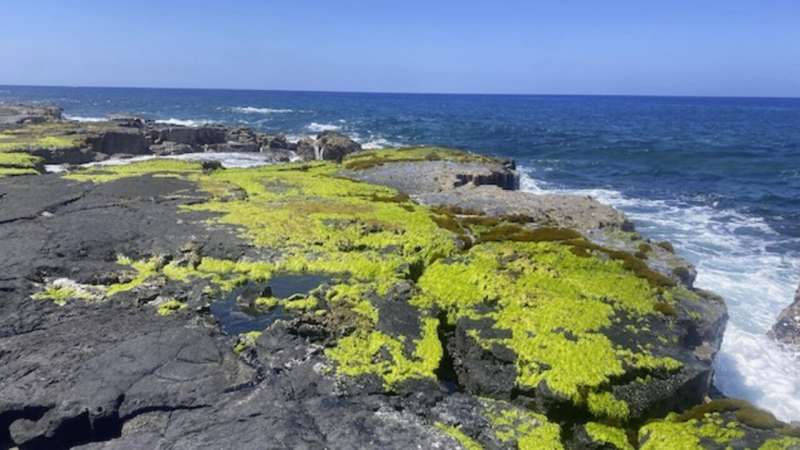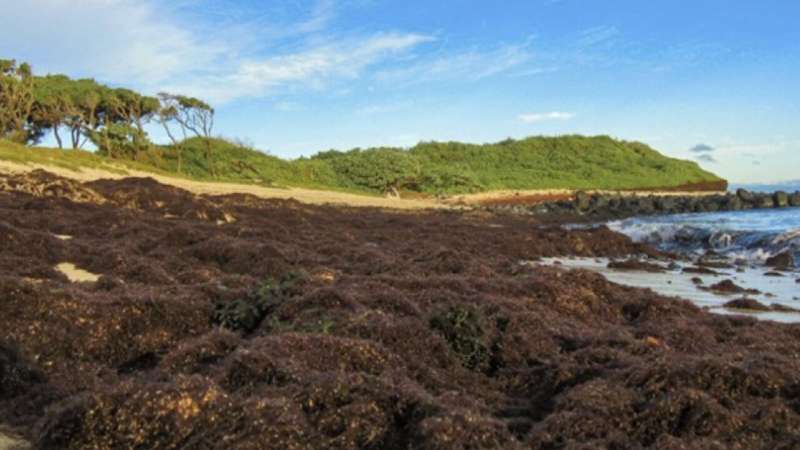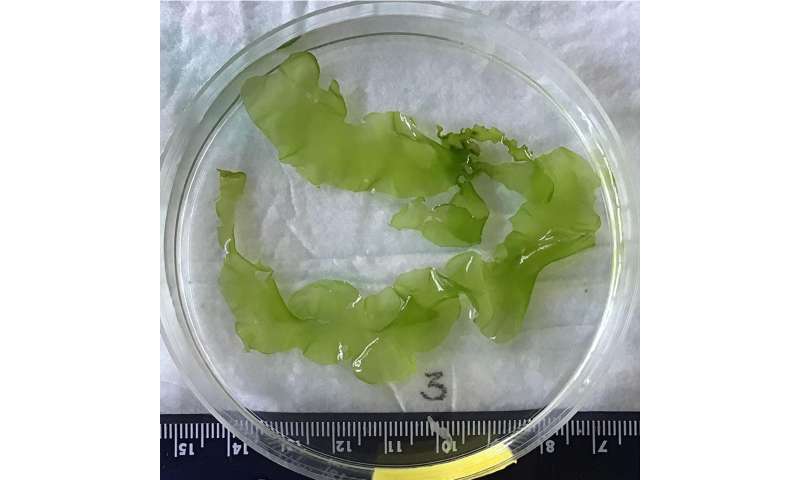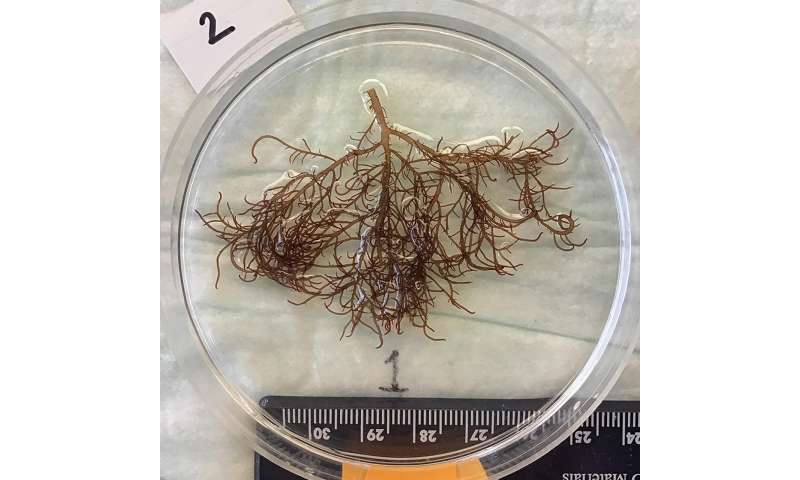This article has been reviewed according to Science X's editorial process and policies. Editors have highlighted the following attributes while ensuring the content's credibility:
fact-checked
peer-reviewed publication
trusted source
proofread
Study looks at ways to protect native seaweed species in Kona

Climate change and increased groundwater pumping are likely to decrease the abundance of limu pālahalaha (Ulva sp.), a native and culturally important limu (native seaweed), and increase the habitat suitability of Hypnea musciformis, an invasive seaweed in coastal groundwater dependent ecosystems in Kona.
A new study by an interdisciplinary team of researchers at the University of Hawaiʻi at Mānoa provides a list of actions we can take to protect limu and the groundwater dependent ecosystems that support them. The work has been published in the journal Water Resources Research.
"Collectively, this work provides the first quantitative evidence of links between climate change, land-use change, groundwater management and limu, a critical public trust resource," according to the researchers. "While there is little we can do to directly influence climate change at the global scale, we have the power to influence trajectories of groundwater use and of watershed management."
Importance of limu
Limu have tremendous cultural value as important and nutritious traditional food sources, they play a critical role in coastal ecosystems as they are eaten by fish and turtles, and they represent unparalleled biodiversity with more than 600 native species.
Wai (freshwater) is intricately linked to limu. Because of the connection between freshwater and limu as important cultural and ecological resources, limu and the groundwater dependent ecosystems that support them are considered a public trust use of water.
Many limu grow in brackish conditions near groundwater discharge seeping from underground springs, thriving off of the extra nutrients and the reduced salinity that this freshwater brings to these groundwater dependent ecosystems. Less freshwater from climate change, increased groundwater pumping or changes in watershed management could mean less limu pālahalaha.
According to researchers, a major challenge is understanding how public trust uses of water, such as for limu, are affected by interacting drivers of climate change, watershed management and groundwater pumping.
Working together, the UH Mānoa interdisciplinary research team combined limu lab experiments with limu field data and land-sea modeling to better understand how urban development (and increased groundwater pumping), climate change (and reduced recharge), and native forest protection (maintenance of groundwater recharge) influence nearshore water quantity and quality (salinity and nutrients), and how this influences the growth of a native limu and an invasive macroalgae along the Kona coast of the Keauhou aquifer.

Research findings
Among the results of the research include:
- Reduced rainfall from climate change reduces submarine groundwater discharge and increases salinity of nearshore waters.
- Future urban development coupled with elevated water demand will likely further decrease submarine groundwater discharge and increase salinity in coastal springs. Increased urban development also increases nutrients (nitrogen and phosphorus) in the groundwater and nearshore water because of wastewater and fertilizer on lawns.
- Protecting native forests prevents the further loss of freshwater and further increases in salinity.
-

Limu pālahalaha. Credit: University of Hawaii at Manoa -

Hypnea musciformis. Credit: University of Hawaii at Manoa
Possible solutions
The researchers suggested the following actions:
- Develop and expand water conservation and reuse initiatives.
- Ensure that new water use is not in conflict with water needed for public trust uses.
- Invest in watershed conservation through watershed partnerships and other programs.
- Invest in cesspool upgrades and effective wastewater management.
More information: B. K. Okuhata et al, Effects of Multiple Drivers of Environmental Change on Native and Invasive Macroalgae in Nearshore Groundwater Dependent Ecosystems, Water Resources Research (2023). DOI: 10.1029/2023WR034593
Journal information: Water Resources Research
Provided by University of Hawaii at Manoa




















